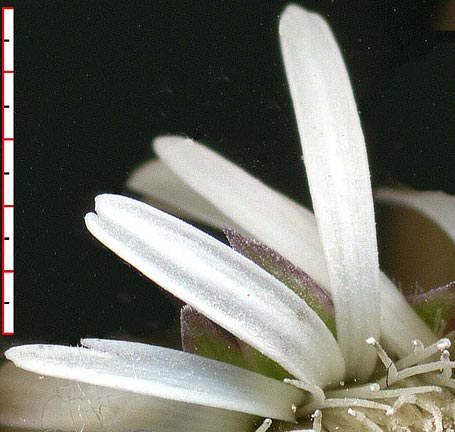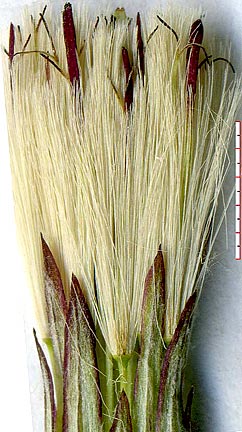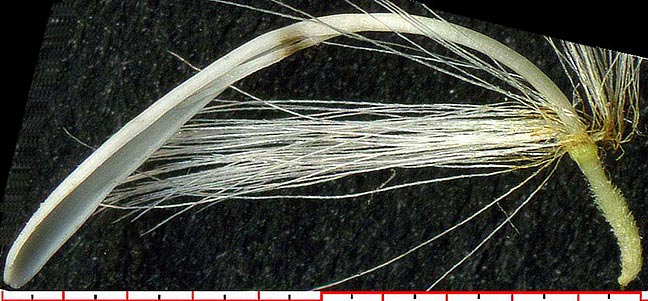
|

|

|
| Open–head with large ligules. | Closed–head with small, but visible, ligules. | Closed–head with reduced ligules |
|---|---|---|
| C. texana | C. carduacea | |


|

|

|
| Open–head with large ligules. | Closed–head with small, but visible, ligules. | Closed–head with reduced ligules |
|---|---|---|
| C. texana | C. carduacea | |

In addition to longer corollas C. texana also had significantly shorter pappus — providing ready access to pollinators during early anthesis.
| floret length | corolla length* | pappus length | |||
|---|---|---|---|---|---|
| average | range | average | range | average | |
| C. texana | 12.6 mm | 11-13.2 mm | same as floret | 9.4 mm | |
| C. carduacea: small ligules | 11.4 mm | 10.2-12 mm | same as floret | 12 mm | |
| C. carduacea: reduced ligules | 10.9 mm | 10-11.3 mm | 8.9 mm | 7.9-9.3 mm | 12.9 mm |




Typical C. carduacea early spring florets (with older ligule having turned crimson — not typical for C. texana)
A separate subpopulation of C. carduacea never produces exserted ligules (even in early spring), but the greatly reduced ligules can be seen at anthesis by dissecting the heads, or later, after they turn crimson and the florets are raised above the involucre (as in the top right image). The floret in the lower image appears to have a small second lip, not generally present with the ligulate florets, and more characteristic of the peripheral long–tubular florets.

 .
.
Long-tubular florets are discussed on a separate page.